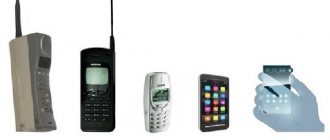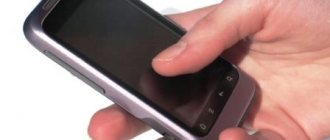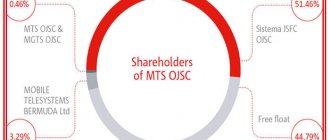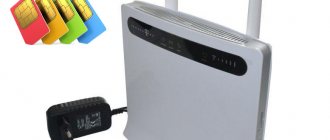The question of choosing a keyboard is acute for every active computer user. The stores offer a huge range of gaming/work/budget devices, but all of them, with rare exceptions, are made using the same technology - membrane.
Mechanical keyboards have been on the Russian market for a long time, but are still something unnecessarily expensive and incomprehensible for the average buyer.
Let's briefly talk about the main differences between a mechanical structure and a membrane structure so that you understand what we are talking about.
Technology difference
The fundamental difference between these two technologies is the internal structure. In mechanics, each individual switch, soldered on a printed circuit board, contains a steel spring inside. It is this that creates resistance when pressing the button. Membrane keyboards appeared in order to simplify and reduce the cost of design. The rigidity of pressing creates a rubber cap that pushes through the membrane and closes the contact. Now let's see what differences make these types of keyboards.
Is it worth paying attention to the availability of software?
If in the case of mice the software provides the ability to adjust the sensitivity of the sensor, then in the case of a keyboard the emphasis is on adjusting the backlight and recording macros. The vast majority of modern keyboards of the middle class and above have software that will allow you to select the appropriate color that the LEDs will emit, plus you can record some actions or reassign the keys. You won't be able to get anything else out of the keyboard software.
And if recording macros is not very important for you, and it’s convenient to change the backlight color using key combinations, then you can cross out this option when selecting it. If there is software, then great, it won’t hurt, but if the keyboard fits all the parameters, but there is no software, then there is no need to be sad - not everyone needs software and not always.
Distinctive features of a mechanical keyboard
Objectively speaking, mechanics are definitely not a necessary component on your computer desk, but if you are a computer enthusiast, then you are unlikely to remain indifferent. And that's why.
Reliability and maintainability
The resource of a high-quality model can easily be measured in decades. For example, the famous IBM Model M has already passed the 30-year mark, but is still in service and in demand among keyboard enthusiasts. Almost any modern mechanical switch has a lifespan of 50-60 million clicks. Recently, Cherry claims 100 million clicks. In general, if you buy a keyboard from a good brand and most importantly use it carefully, it will become your faithful assistant for many years. And even if some button fails, it is easily soldered off and replaced with a new one, because in such a keyboard each button is a separate element.
Press consistency
The pressing force is much more constant and consistent. Each switch contains a spring with a precisely adjusted force. And unlike a membrane keyboard, it clearly maintains the consistency of keystrokes even after years of use.
Choice of effort according to your taste
Most switches (from the English switch) are presented in various variations depending on the pressing force. For example, Gateron Red -> Gateron Yellow -> Gateron Black. They differ only in how tight the pressure is. If you wish, you can generally order separate springs of the force you need.
Three types of switches
Continuing the theme of click variability, it is worth noting 3 main categories of switches: linear, tactile, clicky. Each category has its own pros and cons and has dozens of different types within it.
Pleasant sound
Most mechanical switches make very pleasant sounds when pressed. This has gone so far that the Internet is full of videos with sound tests.
Room for customization
Various form factors, keycaps, lubrication, layer programming. Mechanical keyboards are actually a bit of a rabbit hole. This is a whole community, a hobby. Now it is possible to assemble your own unique board from various components. This market is growing so quickly that demand is much higher than supply.
Advantages and disadvantages
The types of keyboards that are so different in principle of operation also differ significantly in their functions. Technical parameters mainly determine their strengths and weaknesses.
Mechanical keyboard
Such models are ergonomic, comfortable and look stylish. But these are not their only advantages.
Advantages:
- Mechanical models have a long service life - a good keyboard is designed for 50 million keystrokes. There are also more durable options. For example, the Razer BlackWidow V3 is designed for 80 million clicks. The presence of a click (click), which allows you to hear the press and when typing quickly, do not skip numbers and letters.
- Fixation of tactile sensations when pressed - the contact works already in the middle of the stroke. This saves the user time and effort if he types a lot. Fast key response is equally important when using a keyboard for gaming. You can press several keys at the same time and “feel” each of them.
- A mechanical model is easier to repair and customize - it is, in fact, plasticine in the hands of fanatical modders. You can completely personalize it to suit yourself and your tastes by purchasing replacement parts or even entire sets.
- When working with a mechanical keyboard, less effort is wasted due to the ease of pressing; therefore, hand numbness and problems with the carpal tunnel of the hand are less likely to occur.
- The equipment lends itself well to dry cleaning thanks to the easily removable caps.
Flaws:
- High cost compared to a membrane keyboard.
- More noise. Although many models already use quieter switches, it is not yet possible to completely get rid of clicks during operation. Blue switches (“Blue”) are the quietest and are optimal if you are used to working at night and do not want to wake up your household. In order not to change the keycaps, you can buy “damper rings” for them, which absorb sounds when you press the keys.
- Mechanical models use a spring to return the key, making them open and susceptible to damage. Most often, they are not protected from such surprises as spilled coffee or tea (and if there is protection, then the cost is higher).
Mechanical keyboards are slightly heavier than membrane keyboards, so they have less mobility.
Membrane keyboard
Advantages:
- Film keyboards are technologically simple to manufacture and inexpensive.
- Membrane devices have many different modifications, and from this rich assortment you can choose a pretty decent model.
- Such keyboards are easy to clean - due to the lack of switches and the presence of tightness, contact with water and other liquids is not critical for them.
- Low noise levels thanks to the absence of switches, soft silicone backing and smooth key travel.
- In terms of convenience, the device is several steps ahead of its mechanical counterpart - the device is much lighter in weight, it can be easily rearranged and taken with you, which is not always possible with regard to mechanics.
Flaws:
- The need to press the keys completely to activate them, as well as the impossibility of replacing individual buttons.
- Unlike spilled drinks, small particles of dust and other contaminants can seriously clog your keyboard. Cleaning will require complete disassembly - this is a certain inconvenience for the owner.
- Life time. Even expensive models are designed for 7–10 million clicks. For example, the lifespan of one of the most popular membrane keyboards, Logitech K780 Multi-Device Wireless Keyboard Black, reaches 10 million keystrokes.
A disadvantage can also be considered weak tactile feedback, the inability to operate two, three or more keys at once on inexpensive models. Due to the “anatomy” of the membrane gasket, especially when typing quickly, this drawback will be especially noticeable - the keys do not seem to respond, and the keyboard does not “hear” the owner.
Even taking into account the high technical characteristics and wear resistance of materials, after some time membrane models lose their functions. This results in loss of key sensitivity, rubbed ink, poor contact, and lack of quick feedback.
Disadvantages of a mechanical keyboard
As you might have guessed, such pleasure is not cheap. You are unlikely to be able to buy anything of quality for less than $80. Mechanics are also afraid of liquids. Spilled tea or soup can immediately bury your expensive keyboard, so you have to be careful or better yet, refuse to eat at the computer. Typically, such an input device is noisier. The mechanics can be quiet, but only if you choose special silent switches. In all other cases it will be louder. And using, for example, clicky switches like MX Blue can even anger your roommates.
Briefly about the design and functionality of keyboards
Any user is aware that the keyboard is a peripheral device, and more specifically an input device. The main purpose is a set of text characters and numbers. Additional features include controlling the player or character in computer games.
Each character is assigned a specific code, which is sent by the microcontroller to the central processor after the button is activated.
All keys are located on the so-called keyboard matrix and have a fixed position, due to which the symbol is displayed correctly by the microcontroller.
To type a specific character, it is enough to close the corresponding contacts on the matrix. And here the “evolution” of input devices went in two parallel directions, dividing into membrane and mechanical.
The structure inside all computer keyboards is virtually identical, except for the switches used.
Distinctive features of a membrane keyboard
The membrane keyboard also has its advantages, albeit not so significant.
Low cost
A membrane keyboard is so affordable that you can buy almost a dozen pieces for the price of one mechanical one. This completely eliminates the smaller resource.
Silence
Although rubber spoils the sensations, it muffles the sound well. This makes the keyboard less noisy. And if you use it without a housing, you can achieve almost complete silence.
Compactness
It's much easier and cheaper to find a low-profile membrane keyboard. Membrane claves are also noticeably lighter, which can be a plus for frequent transportation.
Liquid resistance
In general, membrane models are not so afraid of liquids. There are even models that can be easily washed under running water. And, again, failure will not be a big hit to your pocket.
Battery or rechargeable keyboard: which is better?
If we are already talking about wireless keyboards, then it is worth saying a few words about the type of power supply. Some keyboards use regular batteries, which provide the device with phenomenal battery life. If the keyboard is not backlit, for example, then it can work for several months in a row. With backlighting, naturally, the battery life drops significantly, but still remains at a pleasant level. The disadvantage of this option is that the batteries tend to lose charge, which cannot be restored later (these are not special rechargeable batteries with a decent price). On the other hand, buying two batteries once a quarter is not very expensive.
AODOOR Slim Compact
The second option is battery-powered keyboards. In this case, if the charge is lost, the user can simply connect the cable and continue working, and the battery is charged by connecting the cable. The advantage is obvious, because the battery will never take you by surprise, but the battery life of a keyboard with a battery is noticeably shorter than that of its battery-powered counterparts. In this regard, the user must choose which option suits him best, but, in general, both methods of power supply are suitable for long-term use both in office conditions and in gaming tasks.
Mechanics vs membrane. Which is better and why?
In this article, we found out what the difference is between a mechanical and membrane keyboard. Although I myself am a big fan of mechanical keyboards, I admit that there is no objective need for them. In fact, it all just comes down to the feeling and sound of pressing. A keyboard won't do your work for you or improve your gaming skills. But it will give an increased level of comfort when typing and a greater level of confidence when playing. Mechanical keyboards are expensive, so you should think several times whether you need it or not. For normal use, you can use a membrane keyboard without any problems. But if you spend a lot of time at the computer and have free finances, then pay attention to the mechanics.
If you still have any questions, ask them in the comments.
What should I buy for gaming or typing?
Everything is fine for typing, really. One person prefers linear switches, another prefers it to be loud and clicky, and another prefers it to be quiet but tactile. Some may even prefer the old diaphragm Keytronic from the 90s. As long as you enjoy the sensations, nothing else matters. If you want pointers, I would personally start with a medium weight tactile switch (55-70cN actuation).
For games, however, I will always recommend using mechanics for several reasons listed below:
Reason 1: Lower latency is always better
With mechanical switches, lower latency usually follows. Traditional sheet metal contact keyboards have latencies (sometimes called input lag) of 15-25 milliseconds, while membrane keyboards typically have typing latencies of over 30 milliseconds. Lower latency means faster reactions, and faster reactions mean more kills and fewer deaths. Using the Hall effect and optical, the delay time can be reduced to approximately 2-4 milliseconds from the moment of actuation until the signal is received from the keyboard and USB cable.
Reason 2: Keystroke Sequence
With membranes, actuation is not very precise. It takes some force to compress the membrane sheets enough to send a signal, but it is not always the same force every time. In sheet metal mechanical switches, sheets of metal touch each other with precise force every time. Consistent keypresses are important in rhythm games like osu! or VSRG. Optical or other sensor-based designs can similarly disable the sensor at precise points along the key's travel.
Reason 3: form factors
I've already avoided this with benefit number two in general of mechanical keyboards, but I feel like it's such an important part of my own gaming that I wanted to include it here. Since mechanical keyboards come in smaller form factors such as 60%, 75% and TKL, you can save space to place on your desktop. This allows you to lower your DPI and improve mouse precision in competitive FPS games like Apex Legends, CS:GO or Overwatch.
Membranes
The most inexpensive to produce, and therefore popular mechanism. It is quite suitable for office use, but professional gamers and those whose work involves typing do not like them. Why?
The reason lies in the switch mechanism itself, which does not support a large number of simultaneous presses. If you regularly work with text, then you probably type very quickly. With speed typing, each key is pressed faster than the previous one is completely released. Professionals in their field may have a large number of symbols in this chain at once.
For example, you are typing text using the touch method, you are already typing the fourth letter in the word, while your finger has not yet completely released the key from the first. With a membrane keyboard, you may experience loss of characters: some of them simply will not be displayed. The same goes for gaming, especially MOBA and RPG games in which the player uses a large number of hotkeys.
The situation is aggravated by the lack of tactile feedback. That is, in any case, you need to press the key all the way for it to “register.” And when working with text or playing games, many keys are pressed casually, since all actions are performed very quickly. In total, this saves a lot of time. Membrane devices do not allow the user such luxury due to their design features.
But the “membranes” are very quiet. The keystrokes are almost inaudible, so you don’t disturb anyone in the office or at home in the evening. In addition, keyboards with this type of keys are light and low - this can also be an argument.
Advantages
- Low price
- The sound of keystrokes is almost inaudible
- Light weight
Flaws
- No tactile feedback
- Small key resource
- Often long response time
Reliability
The reliability of the device determines how long you will enjoy the purchased keyboard. Of course, there are exceptions everywhere. Even the cheapest membrane can last longer than an expensive mechanical one. Also, do not forget about device defects and operating conditions. A mechanical keyboard has greater wear resistance; it is simply stronger due to the metal in its construction. The resource of switches can reach 50-100 million clicks. It is enough to regularly clean them and monitor their condition, and it will last for many years.
Over time, the membrane device loses its original state, and a “fatigue effect” occurs. If you use it for everyday printing in large volumes, this nuance will appear earlier. The gasket, made of silicone or rubber, wears out over time. The button click becomes less obvious, which in turn leads to poor feedback.
Price
The second obvious advantage of the membrane, in addition to its quiet operation, is the price. Due to their simplicity and low cost of production, membrane keyboards are the most popular on the market. You can literally buy a device with the necessary functionality for pennies. A minimum of metal parts has a positive effect on the price.
Mechanical products cost more, by a lot. They are more expensive to produce, but in return we get a more reliable product. A particularly large price gap is observed in the lower segment.
| Characteristic | Mechanical | Membrane |
| Noise | High | Short |
| Tactile feedback | Distinct (except linear switches) | Mediocre |
| Reliability | Higher | Below |
| Cost of the device (in total) | Higher | Below |
| Convenience | ||
| Weight | More | Less |
| Spill resistant | Less stable | More stable |
| Ease of cleaning | Just remove the caps | Requires complete disassembly |
| Customization | With replaceable caps | Absent |
Let's summarize. In modern realities, you can choose a keyboard for any task. It is enough to determine the range of tasks for which you intend to use the device. A computer for the usual family routine with Internet access and printing study reports? A budget membrane keyboard will do, and for convenience, take a closer look at models with multimedia buttons.
Do you type large volumes of text every day at work? Mechanics are everything to us. Choose an ergonomic model with a palm rest and quiet switches. For avid gamers, there are versions with additional multifunction buttons, backlighting and replaceable caps. If you are concerned about noise to others, a high-quality membrane is a universal solution.
And models in a compact form factor will help you save space in your workspace. They do not have a number pad and the gaps between the keys are reduced. Also, don’t forget about devices with wireless connections, they will save you from annoying wires.
Hello everyone, dear friends. Glad to see you! Today we will talk about keyboards, or more precisely, about their two main types - membrane and mechanical, and we will also understand the pros and cons of both types of keyboards. Go!
Purpose of a computer keyboard
It may seem strange to many that I will talk about the purpose of such a peripheral device that is familiar to every PC user. In reality, everything is not so simple.
Initially, the keyboard was necessary for direct communication between the user and the computer. With its help, a person entered various commands. Later, it was also used for printing data on a computer and faster use of applications through keyboard shortcuts.
Even later, as you know, this device also became a game controller, with the help of which the gamer controls his character in the game.
It is precisely this huge range of tasks that can be performed by this simple device that has prompted many manufacturers to try to do something new for a certain circle of their users. This is how various form factors, key mechanisms and additional functions were eventually born.
I advise you to read my recent article, in case it turns out to be useful for you.
Now let's look at which keyboard is better, mechanical or membrane, so that we can begin to understand their purpose.
Mechanics
Mechanical keyboards, unlike membrane ones, have special switches that close the contact inside the key. Once a key is pressed to a certain level, the device recognizes the signal. Accordingly, you do not need to press each key all the way. And this is one of the main advantages of such devices. Each key has a characteristic click, which is felt when the keys are pressed down to a certain level.
Mechanical keys also provide excellent feedback. That is, you will feel physical resistance until you press the key until it clicks. This is called tactile feedback, which greatly simplifies life when working with text. Over time, you get used to a certain key stroke and no longer press them all the way, which speeds up your work.
There are also a large number of types of switches for mechanical keyboards. For example, red, brown, blue, green and even silent with noise-absorbing padding. Speaking of “loudness”. This is a big disadvantage of mechanical devices, since all switches, except silent ones, make strong clicks that can disturb others. But you can choose switches to suit your taste. In terms of personal customization, the mechanics have no equal.
The main advantages of keyboards of this type also include durability. In addition to the extremely high keystroke life, the base of mechanical keyboards is made of metal, which gives the entire structure strength. However, this also leads to a very obvious disadvantage - weight. A couple of kilograms is the norm for such accessories.
It is worth mentioning the issue of price. All other things being equal, mechanics will cost 2-3 times more than a “membrane”.
Advantages
- Presence of tactile feedback
- Large keystroke resource
- Wide selection of switches
- Rugged housing
- Low response time
Convenience
In addition to the parameters considered, the convenience of the product will be important. Along with the mouse, the keyboard is the device with which we have direct contact every day. Let's take the weight of the device, ease of cleaning and customization as a starting point. A membrane keyboard is much lighter than a mechanical one. It is easy to take with you or move around your workspace. We won’t ignore those who like to eat at the computer, fortunately there are plenty of such people. In the assortment you can find keyboards where manufacturers indicate the presence of protection against water.
It can be implemented in different ways: either light - from splashes, or serious - with holes all the way through. In the second case, even a large amount of spilled liquid will not harm the device. Liquid spilled on the membrane is not so critical. In total, it will linger on the rubber layer. If we talk about dirt, remaining crumbs and other things, then you will have to completely disassemble the keyboard, which is not very convenient.
With a mechanical keyboard, everything is diametrically opposed. If you spill water on the keyboard without appropriate protection, you may end up with a non-functional device. Metal parts are very susceptible to liquid damage. In terms of dry cleaning, the mechanics are very convenient. It is enough to remove the caps and we will gain access to the site. The presence of easily removable caps is another advantage.
We can replace them to suit our tastes and create truly customized devices. In gaming solutions you can often find replaceable caps that are included in the kit, and for complete customization, separate kits are sold. In a membrane device we are deprived of such a privilege.
Tactile feedback
Whether it's a gamer or an office worker, what's important about a keyboard is its responsiveness. When working on mechanics, the button is activated halfway through the key stroke. That is, we will clearly feel the click and the corresponding sound, and we will not have to press the button all the way. This, in turn, will save a lot of time when typing large amounts of text and will not lead to severe fatigue. Each press is recorded, regardless of how many other keys are pressed at the same time. This plus is a good help for gamers - faster response time when you need to press one or more buttons in a short period of time.
Tactile feedback is a weak point of membrane keyboards. To activate the key, you need to press it all the way and more effort than for a mechanical one. The simplest products are not capable of processing the simultaneous pressing of more than three buttons. More expensive ones - no more than six. This is due to the structure of the membrane. This is especially noticeable during fast typing, when “clicking” occurs and pressing a key is not activated. If you don't type too fast, this drawback will not be so obvious.
Key mechanism
When considering the choice of a keyboard, first of all, it is worth focusing on the operation of the key mechanism. Whether it is membrane or mechanical, each of them has both its pros and cons. They, in turn, significantly affect the noise, key travel, reliability and price of the device.
There are several types of membrane devices: plunger, scissor and conventional membrane. They have slight differences in the implementation of the keys, but they are united by the presence of a silicone substrate under the buttons. The internal structure is a layer of three plates. Two layers have conductive tracks, and the third is responsible for separating them. Where the buttons are, the separating plate has cutouts that allow the contacts to touch when the button is pressed. The silicone backing, in turn, ensures an accurate hit, and its rounded shape returns the button to its original position after a click. It looks like this:
Mechanical keyboards are more complex. Here we will not find the rubber gasket described above. Each button uses an individual switch rather than a layer of plates. A built-in spring is responsible for the initial position of the button. The force of pressing a key depends on its rigidity. Accordingly, the stiffer the spring, the more effort required to click. The system looks like this:
There are many varieties of these switches to suit every taste. The main ones are Red, Blue and Brown. A little more about them:
| Red | Blue | Brown |
| Suitable for gaming solutions | Suitable for text printing | Universal solution |
| Little effort to click, no click | Activates halfway through stroke, distinct clicking sound | Tactile feedback, almost no click sound |
Some manufacturers produce their own solutions, and it’s easy to get confused in this abundance. Therefore, the only right decision when choosing a keyboard is live tests.










